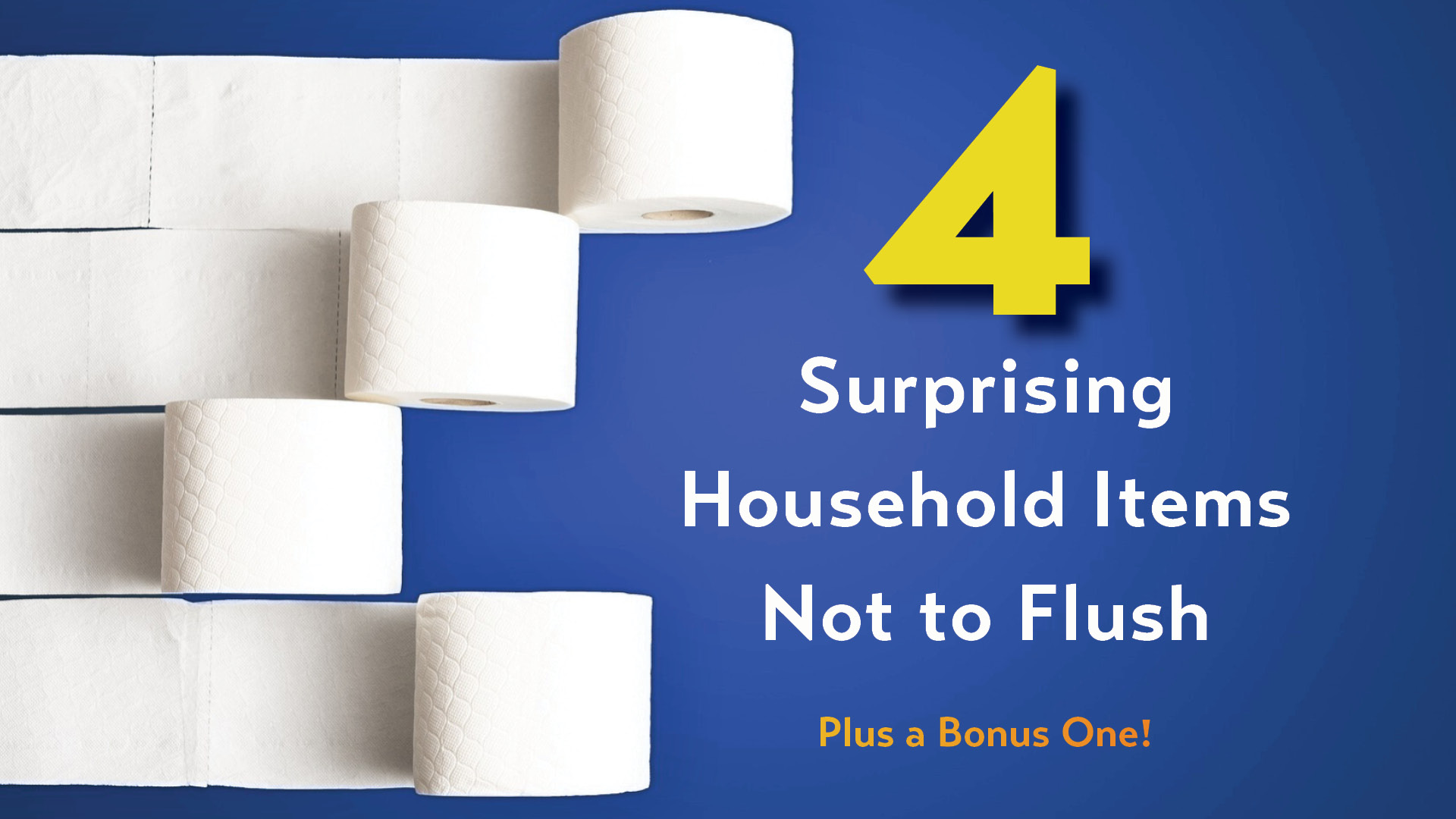
There are many things I’ve learned as a homeowner in the last ten plus years. One thing I’ve heard repeatedly from my husband is “only pee, poop and paper go down the toilet”, especially at times where I’ve dumped bacon grease down the kitchen sink. One thing I’ve learned while working with our Environmental Engineers is that fats, oils, and grease (FOG) should be disposed of in the trash (like other solid waste) because they are insoluble in water. FOG can coagulate to create blockages, not only in residential septic systems, but in sewer collection pipes, pump stations, and wastewater treatment facilities. Below are four household items that should be disposed of as solid waste (in the trash), not flushed down the drain, saving wastewater collection and treatment processes thousands in maintenance and repairs.
- Hair – My family of four is lucky to have a lot of nice, beautiful hair. Sometimes that hair ends up as a mural on the shower walls avoiding the drain. Sometimes it’s unavoidable and ends up down the drain or in the vacuum cleaner (cleaning the hair out of the brush head on a vacuum is a problem for another time). Hair tends to stick to the sides of drains, causing buildup and clogs over time. It should be screened at the drain and tossed in the trash. Hair is also not biodegradable, so if it ends up in pumps or at the wastewater treatment facility, it can be difficult to remove. It’s best to use drain strainers or screens in bathroom sinks and showers. If you’re interested in an environmentally friendly way to dispose of hair – check out what this company is doing!
- Paper Towels/Facial Tissues/Wipes – if you’re like me and thought “this is basically the same as toilet paper, I can flush this without causing harm”, think again. Paper towels, facial tissues, and “flushable wipes” aren’t designed the same as toilet paper. Paper towels and facial tissues don’t dissolve quickly in water and “flushable wipes” don’t break down at all when wet. In fact, “flushable wipes” frequently clog sewer pipes and pumps causing significant damage to wastewater infrastructure. In wastewater treatment facilities paper towels, tissues, wipes, and other inorganic materials typically get screened out at the front end of the facility and disposed of at a landfill. This preliminary screening requires mechanical equipment that uses electricity 24/7/365 and several hours per week of operator maintenance. Once in the wastewater stream these inorganic materials become far costlier to remove and dispose of to protect the environment.
- Medication – My household has always mixed leftover medication with kitty litter (bonus: another item you shouldn’t flush down the toilet) and thrown it in the trash. Flushing medication down the toilet allows the medication to dissolve in the water, becoming an “emerging contaminant”. Emerging contaminants are products that enter the wastewater facility but cannot be treated or removed using current technologies. Pharmaceuticals are one example, PFAS is another. These contaminants simply pass through the facility and enter the environment untreated. These pharmaceutical compounds can lead to contamination of aquatic ecosystems and harm aquatic life. These compounds can also contaminate water supplies, causing a public health issue. It’s best to research what options pharmacies, hospitals, or law enforcement agencies offer for medication take-back before putting in the trash (not down the drain).
- Bleach – I frequently clean with bleach, whether it’s in my laundry or cleaning surfaces around the house – I love the residual smell of a surface just cleaned with bleach. However, my septic system does not like bleach! Bleach is a powerful substance meant to kill bacteria and germs but can also kill the bacteria in your septic system. Bleach should be disposed of with care. It can react with other substances in your pipes and potentially create dangerous fumes – never mix bleach with ammonia! It’s best to bring unused bleach to a hazardous waste facility or annual collection event. If your home is connected to city water and wastewater utilities, diluted bleach can be (sparingly) poured down the drain using lots of water to dilute the concentration.
No matter where you live, it’s best to only flush the three p’s – pee, poop, and (toilet)paper down the toilet. Our daily habits can have a significant impact on our environment and the wastewater treatment facility systems our communities depend on. It’s crucial to be mindful of what we flush down the toilet and drains. Remember, what goes down the drain doesn’t just disappear; it can lead to costly repairs and environmental harm. Let’s all take responsibility for our actions and make the job of our dedicated water quality professionals a bit easier by making good choices when it comes to proper disposal of household waste.









